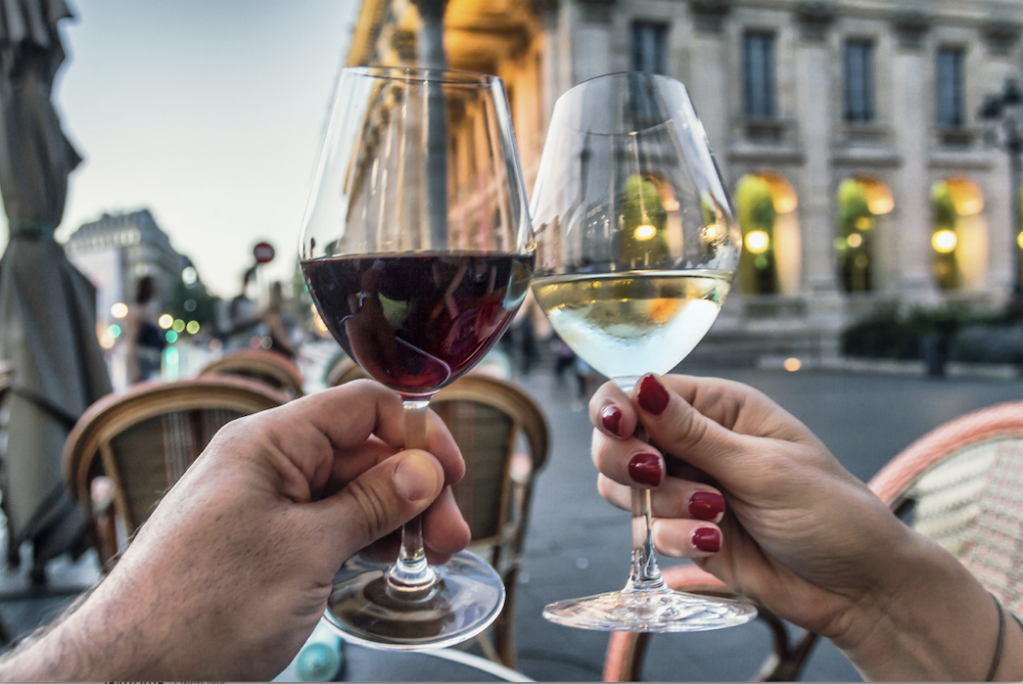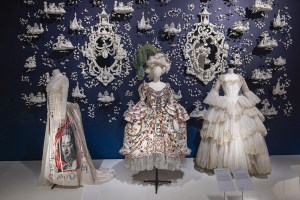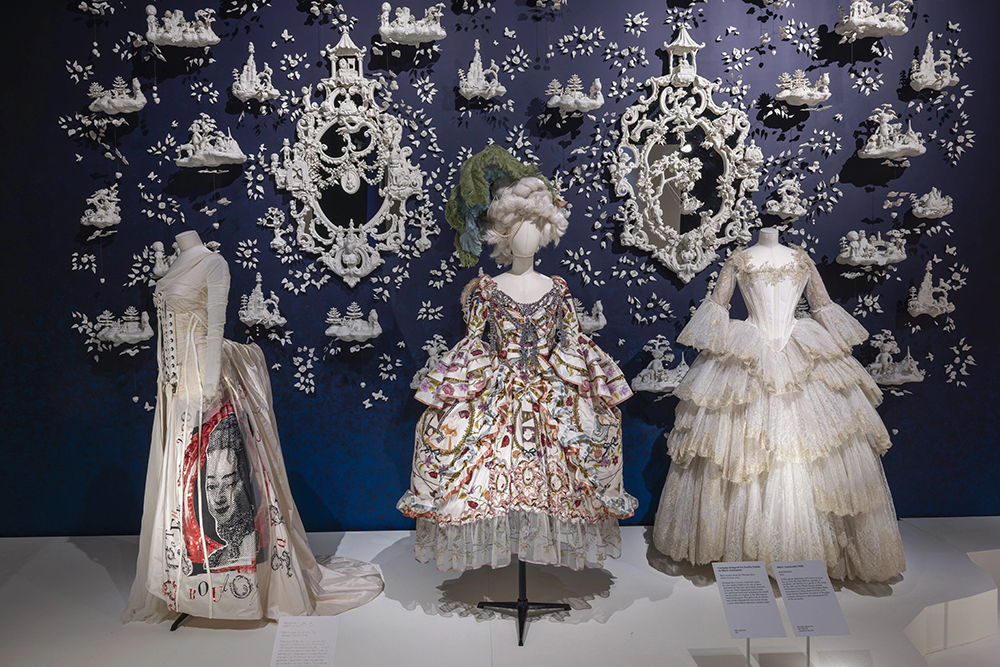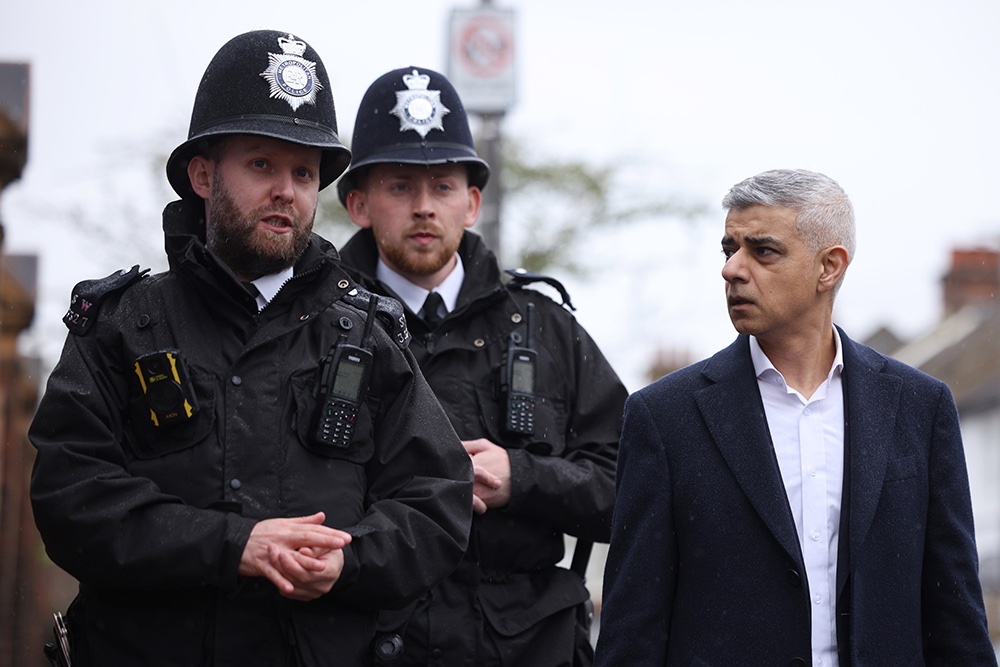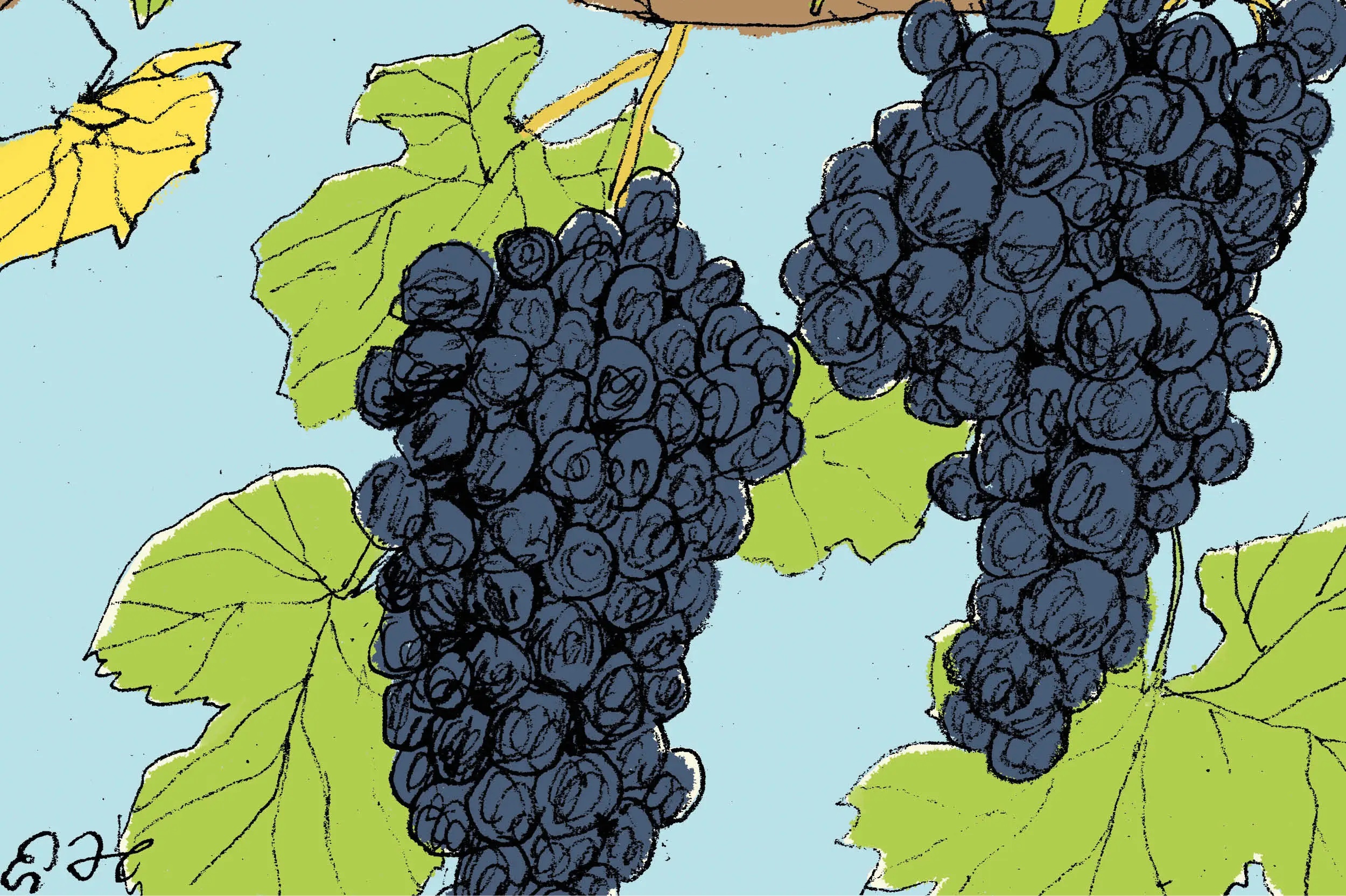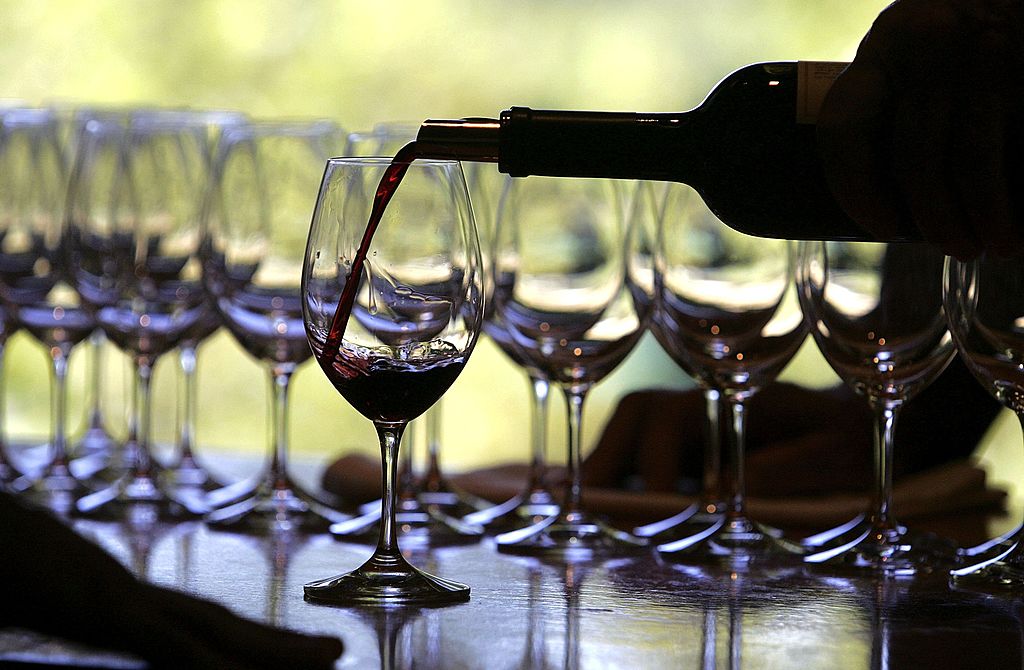‘If you swill it around, you look at the legs of the wine — we’re in the Naughty Room, so I’m sorry to talk about legs again!’ exclaims Prince Robert of Luxembourg, alluding to our saucy surroundings. We are tucked away in a bijou risqué room at 67 Pall Mall, a London private members’ club for wine lovers. The Naughty Corner, as it’s known, is adorned with erotic paintings, and a miniature sculpture of a naked man has been turned away from us.
While members must be approved, there was little chance of Prince Robert being blackballed. His family owns the French wine estate Chateau Haut-Brion, the oldest of the great growths of Bordeaux. A bottle can easily set you back several hundred pounds, and at the dizzier heights of the price range, there’s a double magnum up for grabs at €27,000.
‘Many people make good wines, but I think great wines are more difficult to find,’ muses Prince Robert. ‘The diversity and complexity of French wines, combined with the passion of the French winemakers excites me beyond anything around the globe,’ declares the Francophile Prince, whose maternal great-grandfather Clarence Dillon bought Chateau Haut-Brion in 1935.

The family business has since expanded and now includes the highly regarded neighboring Bordeaux wine estate Château La Mission Haut-Brion, and Le Clarence, a Parisian restaurant around the corner from the Champs-Élysées. ‘I’ve been there when people have ordered bottles worth thousands of euros, and sometimes I’ve been lucky enough to have people ask me if I would like to taste it,’ reveals Prince Robert.
It’s easy to imagine the restaurant is just a vehicle for flogging the wine, but tucked away in a magnificent grade-II-listed mansion, entering Le Clarence is like stepping onto the set of Dangerous Liaisons. With two Michelin stars and no menu, head chef Christophe Pelé cooks according to his instincts. ‘I feel the atmosphere and the energy of the table, and get a feeling for what they desire,’ says Pelé with passion, when I’m invited to experience the wine paired with his superb Gallic gastronomy.
It may be some time before any of us enjoy a normal jaunt to Paris, but savoring a good French wine could be just the ticket for surviving the pandemic. Here’s Prince Robert’s advice for doing just that…
Silence is golden
I’ll raise my glass and say cheers, or chin chin, or sante, which is particularly topical right now, but when I taste the wine, my initial reaction is not to speak. I could be deep in conversation, but an exceptional wine will render me speechless. That, to me, is the ultimate success. It’s like a beautiful sunset or a painting that takes your breath away — it’s overwhelming and I have to concentrate on that particular moment. Silence is oftentimes the best thing, because trying to put it into words is like trying to say what’s good about the Mona Lisa.
Don’t read the small print
We used to have far too much information on the bottle and the consumer got lost, especially in France. The market has tried, over the last few years, to simplify this, but from a legislation standpoint we’re forced to include a lot of information. It’s more than we need and it’s too complicated, but it’s hard to go wrong with the French appellations and regions, so when you’re looking at a bottle, just look at the brand. Go for a good, luxury brand for the ultimate promise of quality.
Live and learn
I’m somewhat Socratic, because I believe in discovering, and approaching that with a sense of humility. I think anyone who’s a wine lover is interested in discovering as much about wine as possible, whether that’s by reading articles, or specific magazines or books, or exchanging with fellow wine lovers and experts in the field. If you love wine, you love stories, and I enjoy exchanging with sommeliers and people in wine shops, and receiving guidance from people who are passionate — it’s like going to a library and speaking to the librarian.
[special_offer]
Use your senses
Look at the color in the glass. Wines evolve with age — white wines tend to get darker and red wines tend to get lighter, while the legs will give you a sense of density. Swill it, and actually stick your nose into the glass. This will give you an indication of the depth and complexity of the wine, and if there is a problem, whether it’s with the cork or if there’s another technical problem, you’ll know pretty fast just by the nose. That’s why you see people smelling the wines before they taste them, and sending them back to the sommelier. Only after that would you taste it.
Don’t break the bank
The wonderful thing about wine today is that you can buy very good wines at an affordable price. When people come to Le Clarence, they might buy a bottle that’s €10,000 or they might buy a bottle that’s worth €100 and they might get as much pleasure from it, because of whatever they’re celebrating in the moment, and the person they’re with. If you’re buying from a retailer, you should be able to find some very good wines that are £11-15.
This article was originally published on Spectator Life.



